Well, in this answer I showed that the formula to find the slope (in dB/decade) is given by:
$$\mathcal{I}\left(\omega\right)=20\log_{10}\left(\lim_{\omega\to\infty}\frac{\left|\underline{\mathscr{H}}\left(10\omega\text{j}\right)\right|}{\left|\underline{\mathscr{H}}\left(\omega\text{j}\right)\right|}\right)\tag1$$
Now, in your case we have:
$$\left|\underline{\mathscr{H}}\left(\omega\text{j}\right)\right|=\frac{1}{1+\left(\text{CR}\omega\right)^2}\tag2$$
So, we get:
$$\frac{\left|\underline{\mathscr{H}}\left(10\omega\text{j}\right)\right|}{\left|\underline{\mathscr{H}}\left(\omega\text{j}\right)\right|}=\frac{\frac{1}{1+\left(10\text{CR}\omega\right)^2}}{\frac{1}{1+\left(\text{CR}\omega\right)^2}}=\frac{1+\left(\text{CR}\omega\right)^2}{1+\left(10\text{CR}\omega\right)^2}=\frac{\frac{1}{\omega^2}+\left(\text{CR}\right)^2}{\frac{1}{\omega^2}+\left(10\text{CR}\right)^2}\tag3$$
Taking the limit gives:
$$\lim_{\omega\to\infty}\frac{\frac{1}{\omega^2}+\left(\text{CR}\right)^2}{\frac{1}{\omega^2}+\left(10\text{CR}\right)^2}=\frac{0+\left(\text{CR}\right)^2}{0+\left(10\text{CR}\right)^2}=\frac{1}{10^2}=\frac{1}{100}\tag4$$
And, so you get:
$$\mathcal{I}\left(\omega\right)=20\log_{10}\left(\frac{1}{100}\right)=-40\space\text{dB/decade}\tag5$$
EDIT:
In order to find the cut-off frequency we can use:
$$\left|\underline{\mathscr{H}}\left(\omega_0\text{j}\right)\right|=\frac{1}{\sqrt{2}}\tag6$$
When solving this you will find:
$$\text{C}=\frac{\sqrt{\sqrt{2}-1}}{\text{R}\omega_0}=\frac{\sqrt{\sqrt{2}-1}}{2\pi\text{Rf}_0}\tag7$$
Using your values, you'll find:
$$\text{C}=\frac{\sqrt{\sqrt{2}-1}}{2\pi\cdot10\cdot1000\cdot1\cdot1000}=\frac{\sqrt{\sqrt{2}-1}}{20000000\pi}\approx1.024312\cdot10^{-8}\space\text{F}\tag8$$



